平成28年09月16日 金曜日号
“武蔵野 平成21年”
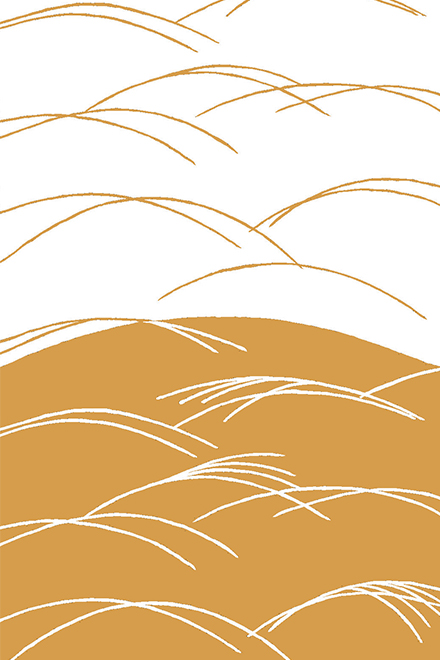
昔、武蔵野は芒の穂で覆われていたのだろうか?
秋風が吹き始めると芒の穂が姿を見せる。
風に大きく揺れ横倒しになりながら、
たおやかに生きている。
「そうそう」と相づちを打ち
右に振れ左に振れながら、
自分の考えを確かめ確かめ歩んでいく日本人と重なってくる。
(脇阪 克二)
"Musashino / Pampas grass in Tokyo suburb "(2009,by Katsuji Wakisaka)
I wonder if Musashino was hidden by pampas grass down the ages.
When the autumn breeze begins to blow, pampas ears appear.
They flickering in the autumn winds, survive with fortitude.
Waving from side to side, they chime in with each other:
"Ay, ay!" “That's it.” “You are right.”
Resembled Japanese people in the way of confirming their own identity.
| English translation by LI XIAO XIAO |
"Musashino"(2009, par Katsuji Wakisaka)
Autrefois, Musashino était-elle vraiment dissimulée par des épis d’arête?
Quand se lève le vent automnale apparaissent les épis d’arête.
Tout en se couchant sous les rafales de vent, Ils survivent, fragiles.
En acquiesçant de vive voix, Ballottées de droite à gauche,
Ils ressemblent aux japonais qui continuent leur petit bout de chemin.
| Traduction française par Jean-Baptiste Fauvel Matsumoto |
"武藏野"(2009, 胁阪 克二)
不知武藏野是否自古便是一片芒草覆蓋的原野,
秋風拂,芒穗見。
風大時穗兒們彎足了腰,卻不斷折。
他們相互應答著“對啊對啊”,
在不斷搖曳中發現自我,
與日本人的形象深相契合。
| 中译 : 李 瀟瀟 |
→こちらのテキスタイルデザイン商品
(Textile products with this pattern)
平成28年09月14日 水曜日号
“月夜 平成24年”
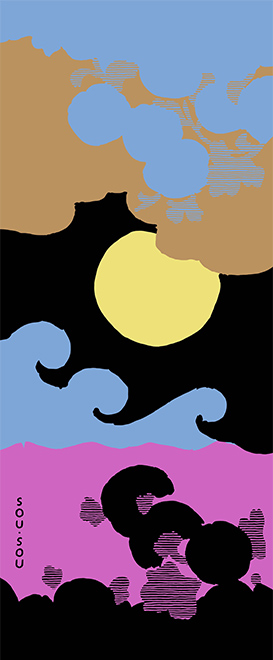
夜は暗いと思っているが
月夜は予想以上に明るい。
特に秋の満月の夜は煌々と輝いている。
浜辺へ出てみれば波は月光をあびて
きらきらとはね
雲は夜空をかけめぐっている。
壮大な大自然の舞台を月夜は見せてくれる。
(脇阪 克二)
"Tsukiyo / Moonlit night"(2012,by Katsuji Wakisaka)
Dark autumn night,
Unexpectedly bright under the moonlight.
As I walk along the shore,
Full moon hangs over,
Work her magic across the sky.
Silver rays light up the sea,
Thousands of stars twinkling in the waves,
While clouds floating in the night sky.
Mid-autumn moon, the queen of the night,
Paint a magnificent picture of the natural site.
| English translation by LI XIAO XIAO |
"Nuit de clair de lune"(2012, par Katsuji Wakisaka)
Je trouve les nuits sombres et obscures mais les nuits de clair de lune sont plus lumineuses que ce qu'on pourrait prévoir.
Principalement les nuits d'automne pendant lesquelles les pleines lunes brillent de milles feux.
En se rendant à la plage, les vagues prennent les couleurs du clair de lune.
Quelle clarté!
Les nuages se baladent eux dans le ciel nocturne.
Cette nuit de clair de lune nous offre cette magnifique scène de nature.
| Traduction française par Jean-Baptiste Fauvel Matsumoto |
"月夜"(2012, 脇阪 克二)
原以爲秋夜幽暗,
月夜卻意外明朗。
猶數中秋滿月最爲皎潔。
去到海邊,
遙望月光傾灑,波光粼粼。
夜風徐徐吹送,遊雲穿行。
盈盈皓月,點亮自然盛大的舞台。
| 中譯 : 李 瀟瀟 |
→こちらのテキスタイルデザイン商品
(Textile products with this pattern)
平成28年09月10日 土曜日号
“風雅 昭和58年”
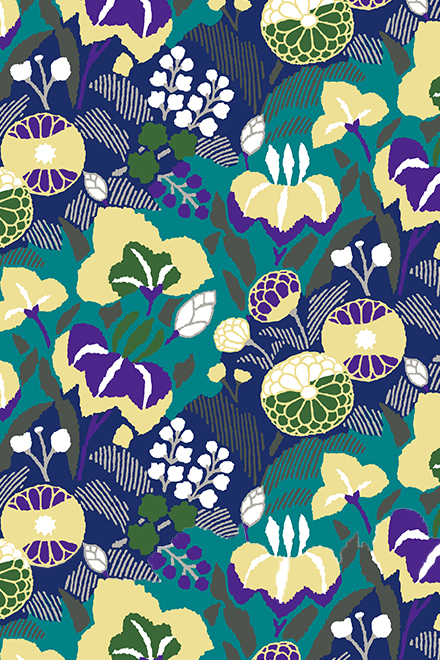
能や狂言の衣装、小袖などの着物の模様。
刺繍や辻ヶ花などの技法で表現された花々。
昔の人が生きていた雅な世界をたどりながら
今の時代を表現しようと試みる。
風雅なよさを残しながら。
(脇阪 克二)
"Fūga / Elegance"(1983,by Katsuji Wakisaka)
These flowers are often seen in the traditional costumes of Noh and Kyogen, or the kimono with short sleeves.
They are represented by techniques of embroidery or Tsujigahana(stitch-resist tie-dyeing).
I tried to maintaining the Elegance crated by our ancestors, and express it in a modern way.
| English translation by LI XIAO XIAO |
"Fūga / L'élégance "(1983, par Katsuji Wakisaka)
Les motifs des costumes de théâtre nō et de kyōgen, ou encore des kimonos à manches courtes.
Les fleurs représentées via des techniques de broderies ou de Tsujigahana, méthode de teinture sur fond blanc.
Nous avons essayé de reproduire notre époque en s'inspirant du monde raffiné dans lequel vivaient nos aïeux.
En conservant cette élégance...
| Traduction française par Jean-Baptiste Fauvel Matsumoto |
"風雅"(1983, 脇阪 克二)
此花紋常見於能劇或狂言等日本傳統戲劇的舞台服裝
或小袖和服的花紋中
古代日本人運用刺繡或辻花(輪廓花染)等染織勾勒技法
呈現出紋樣之美
我嘗試賦予它現代風尚的表現形式
同時又保留住古典風雅的韻味
| 中譯 : 李 瀟瀟 |
→こちらのテキスタイルデザイン商品
(Textile products with this pattern)
平成28年09月07日 水曜日号
“ちぎれ雲 平成2年”
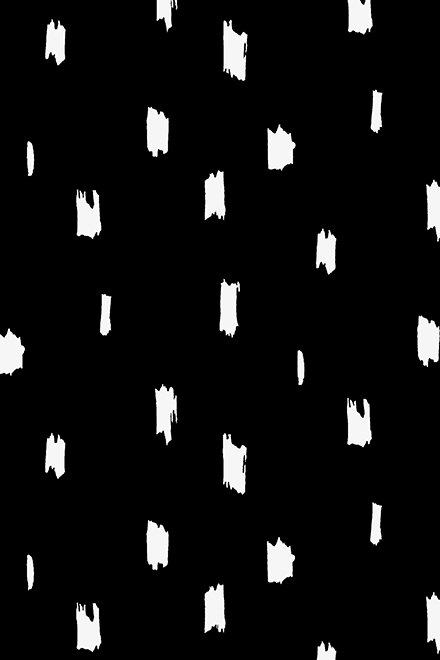
青い空に筆でさっさっと描いたような白い雲が並んでいる。
澄んだその空を見上げていると、
今自分が感じている悩みや考えていることが、
何ともちっぽけなことかと思えてくる。
自然はいつも僕たちを解放してくれる。
(脇阪 克二)
"Fractus clouds"(1990,by Katsuji Wakisaka)
Fractus clouds,
Like someone scratched in the blue sky with a white painting brush.
Looking up to the bright sky,
All our problems and anxiety become so slight.
Nature always set us free.
| English translation by LI XIAO XIAO |
"Altostratus"(1990, par Katsuji Wakisaka)
Des nuages qu'on croirait esquissés au pinceau se baladent dans le ciel bleu.
En levant les yeux vers les cieux,
Tous nos problèmes et nos pensées à l'instant présent nous apparaissent comme tout à fait futile.
La nature nous délivrera toujours de nos soucis.
| Traduction française par Jean-Baptiste Fauvel Matsumoto |
"千切雲"(1990, 胁阪 克二)
浮雲漫天,像是誰在青空幕布上信手描繪的畫作。
抬頭仰望澄澈明淨的蒼穹,
一切煩惱都變得微不足道。
自然總是如此直觸內心,讓人釋懷。
| 中译 : 李 瀟瀟 |
→こちらのテキスタイルデザイン商品
(Textile products with this pattern)
平成28年09月03日 土曜日号
“石庭 平成28年”

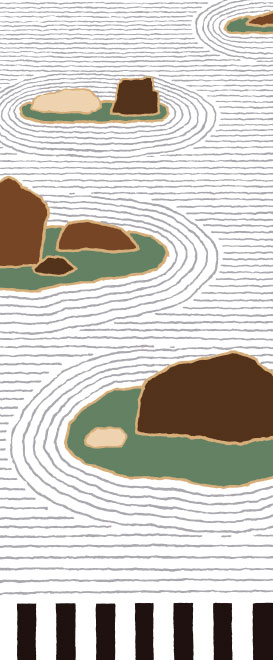
石と砂と苔で構成された庭。
禅宗のお寺にある石庭は
木や水を廃した非日常的な空間。
哲学的な問いが浮び上ってくる。
この緊張感が快よい。
(脇阪 克二)
"Sekitei / Rock garden"(2016,by Katsuji Wakisaka)
The rock garden of Zen Buddhist temples,
Creates a non-ordinary landscape through carefully composed arrangements of rocks, sand and moss,
With out any trees or water feature,
Rock garden evokes some philosophical concepts.
This voltage is a pleasant feeling.
| English translation by LI XIAO XIAO |
"Sekitei / Jardin sec"(2016, par Katsuji Wakisaka)
Un jardin modelé avec des pierres, du sable et de la mousse.
Les jardins secs des temples bouddhistes zen
Sont des espaces insolites sans arbres ni eau.
Des questions philosophiques émergent dans nos esprits.
Ce sentiment de tension est plaisant.
| Traduction française par Jean-Baptiste Fauvel Matsumoto |
"石庭"(2016, 胁阪 克二)
沙礫,岩石,苔藓,
構成了日本禅宗的石庭。
枯山水營造出一隅非日常的空間,
表達出深沈的哲理,
也喚起某種暢快的緊張感。
| 中译 : 李 瀟瀟 |
→こちらのテキスタイルデザイン商品
(Textile products with this pattern)
平成28年08月20日 土曜日号
“大滝 平成22年”
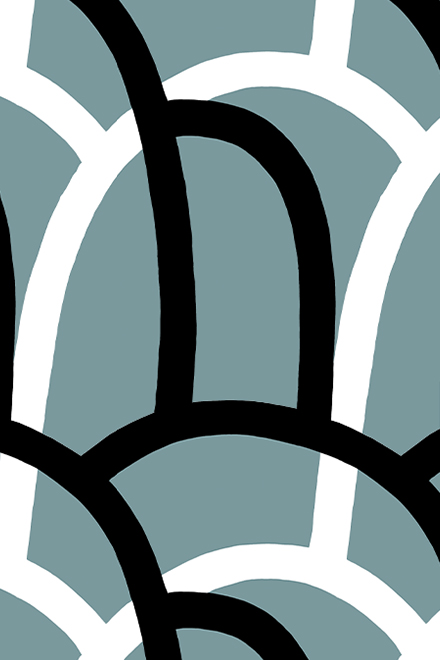
天から降るように激しく水しぶきをあげて落ちてくる滝。
途中の岩でニつ、三つに分かれ、
弧を描いて水の柱が落ちてくる。
ドーっという絶え間ない水の音の中にいると、
とらわれていたことも吹き飛んで、
滝と一体となった爽快感に包まれる。
(脇阪 克二)
"Ōtaki / Magnificent fall"(2010,by Katsuji Wakisaka)
The Waterfall,
Like a river pouring from the sky,
Rapidly flows down the cliff.
Its gushing water,
Dashing against rocks,
Split into two or three pieces,
And travelling to the river in an arc.
It roars a graceful sound that chase my blues away and make me feel free.
| English translation by LI XIAO XIAO |
"La grande cascade"(2010, par Katsuji Wakisaka)
Elle tombe frénétiquement en nous éclaboussant,
Comme si elle descendait directement du ciel.
Se divisant en deux ou trois au contact de pierres,
Des piliers d'eau se déversent, dessinant un arc.
Sous les sons incessants de l'eau qui s'abat,
Les soucis du quotidien s'envolent
et on se laisse envahir du bien-être de ne faire qu'un avec la cascade.
| Traduction française par Jean-Baptiste Fauvel Matsumoto |
"大瀑"(2010, 胁阪 克二)
一道瀑布淩空飛落,珠玑四濺。
途中與石壁相擊,分成水柱兩三股,
劃出弧線跌入潭中。
瀑水持續沖擊的轟然巨響,
揮散我的煩擾雜念,
身心都融進它一瀉千裏的聲威中。
| 中译 : 李 瀟瀟 |
→こちらのテキスタイルデザイン商品
(Textile products with this pattern)
平成28年08月17日 水曜日号
“わきあがる 平成25年”

地上から天上へ向けてむくむくむくと涌き上がる。
夏のエネルギーに満ちた空気が
爆発を起こすように立ちのぼっていく。
生命力に満ちた力強い躍動が続いていく。
波のように竜のように花のように
姿を変え形を変えて広がっていく。
(脇阪 克二)
"Wakiagaru / Bubble up"(2013,by Katsuji Wakisaka)
Summer air,
Full of energy,
Leap up from the burning ground.
Powerfully, like an explosion,
Bang. Bang. Bang!
Blow up into various shape of waves, falls and flowers.
Rising, spreading, bubbling up.
| English translation by LI XIAO XIAO |
"Wakiagaru / Vapeurs"(2013, par Katsuji Wakisaka)
Un air d'été, plein d'énergie, Les vapeurs surgissent du sol en fusion.
Puissantes, comme une explosion, Elles continuent de s'élever. Tel une vague, une cascade, une fleur Elles changent de formes et d'apparences.
| Traduction française par Jean-Baptiste Fauvel Matsumoto |
"湧起"(2013, 脇阪 克二)
炎夏旺盛的空氣
從地面往空中噴湧升騰
生意盎然地躍動著
變換出各種形狀
如浪濤,如瀑布,如花般盛放
| 中譯 : 李 瀟瀟 |
→こちらのテキスタイルデザイン商品
(Textile products with this pattern)
平成28年08月13日 土曜日号
“送り火 平成20年”
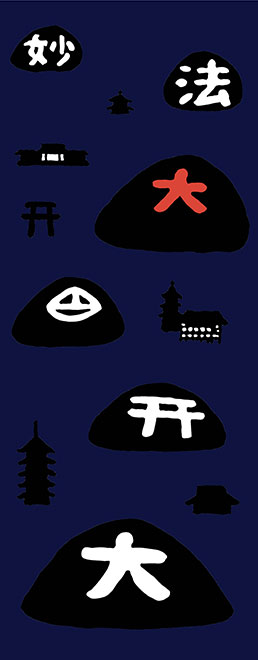
八月十六日の夜、大文字から五山に点火されていく。
祖先の霊が帰っていかれるのを送る火。
火がひとつひとつと灯り、
やがて激しく燃え上がる
大の字が夜空を焦がす。
それが燃え尽きていくのを見ていると、
夏が去っていくのだと思う。
(脇阪 克二)
"Okuribi / Ceremonial bonfire in Kyoto"(2008,by Katsuji Wakisaka)
On the evening of August 16,
Ceremonial bonfire are lit on the five mountains side surrounding Kyoto city.
Okuribi is held to see off our ancestors' spirits on the final night of Obon week.
The five fires are lit off one after another, painting the night sky a bright red.
Bonfire of Gozan,
Burn out the darkness, burn out my summertime.
| English translation by LI XIAO XIAO |
"Okuribi / Les feux de Daimonji"(2008, par Katsuji Wakisaka)
Le soir du 16 Août, des feux sont allumés
Sur les cinq monts entourant la ville de Kyoto.
Okuribi est organisé pour raccompagner les esprits de nos ancêtres vers l'autre monde.
Les cinq feux s'embrasent les uns après les autres Illuminant le ciel nocturne de flammes rouges.
En observant les feux de Daimonji se consumer,
J’ai l’impression de voir l'été se terminer peu à peu.
| Traduction française par Jean-Baptiste Fauvel Matsumoto |
"五山送火"(2008, 胁阪 克二)
每年8月16日夜裏,環繞京都的五座山上依次點燃篝火,
爲盂蘭盆節期間歸來的先祖魂靈送行。
這就是京都的大文字五山送火。
明火依次被點燃,愈漸熾烈,灼燒八月的夜空。
我目送它的燃盡,仿佛也看到了夏的臨終。
| 中译 : 李 瀟瀟 |
→こちらのテキスタイルデザイン商品
(Textile products with this pattern)
平成28年08月10日 水曜日号
“夏花火 平成20年”
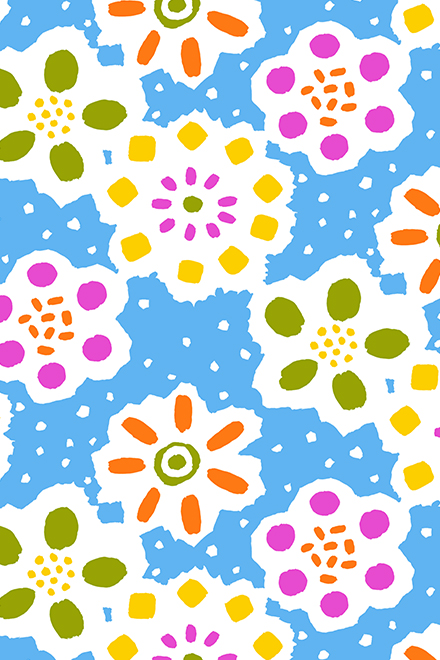
小さいころ、夏に海へ行ったこと、
スイカをおなかいっぱい食べたこと。
花火も楽しみだった。
ドーンという音とともに、大輪の花を咲かせるのを
我を忘れて見とれていた。
あの夏がなつかしく思い出される。
(脇阪 克二)
"Natsu hanabi / Summer fireworks"(2008,by Katsuji Wakisaka)
Something about summer memories:
Going to the beach,
Eating watermelon heartily,
Watching fireworks.
Fireworks could have been
The most brilliant sparkling flowers,
Boom, boom, BOOM into the night,
Always evoke my memories of summer.
| English translation by LI XIAO XIAO |
"Natsu hanabi / Un été rempli de souvenirs"(2008, par Katsuji Wakisaka)
Aller à la mer, Manger de la pastèque, Regarder les feux d'artifice. Avec un bruit retentissant, Les feux en forme de fleurs éclairent la nuit Et nous rappellent avec nostalgie nos étés passés.
| Traduction française par Jean-Baptiste Fauvel Matsumoto |
"夏日煙火"(2008, 胁阪 克二)
夏日是,
兒時去過的海邊,
是大快朵頤的西瓜,
是碩然綻放的煙火。
砰!
夏夜空裏盛開的漫天華彩,
我懷念那仰望過的美麗和彼時胸中的砰然。
| 中译 : 李 瀟瀟 |
→こちらのテキスタイルデザイン商品
(Textile products with this pattern)
平成28年08月06日 土曜日号
“立秋 平成26年”
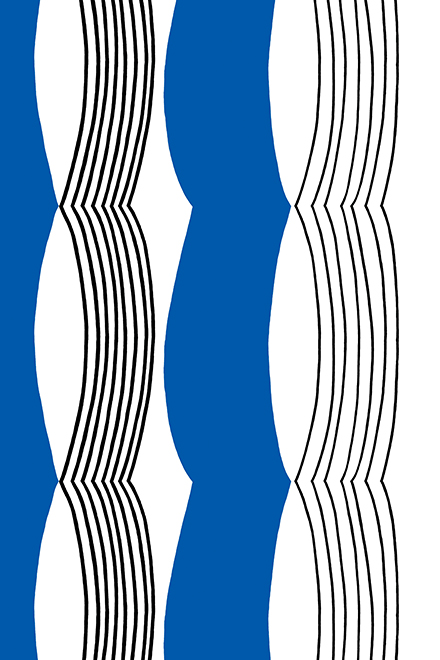
暦の上では秋だが実際には
残暑が厳しく一年で一番暑い季節。
早く秋が来ないかなぁと思うころ。
しかし風のそよぎや雲の形に何とはなしに
秋の気配がただよいはじめるころでもある。
(脇阪 克二)
"Risshū / First day of autumn"(2014,by Katsuji Wakisaka)
According to the Japanese calendar,
Autumn starts from this day.
However, it seems to be hottest period all year around.
Like the end of summer meets the beginning of autumn.
People look forward to the coming season,
While the clouds drift and the winds sigh around them.
Like the beginning of autumn meets the end of summer.
| English translation by LI XIAO XIAO |
"Risshū / Début de l'automne"(2014, par Katsuji Wakisaka)
D'après le calendrier, nous sommes en automne
En réalité, la saison la plus chaude de l'année ne fait que débuter.
À quand la venue de l'automne…?
Toutefois, il y a d'une certaine manière dans la brise matinale et la forme des nuages un air de début d’automne.
| Traduction française par Jean-Baptiste Fauvel Matsumoto |
"立秋"(2014, 脇阪 克二)
二十四節氣來到了立秋,
實則卻是一年中暑氣蒸騰的時節,
讓人期盼秋天真正的降臨。
仔細感受,會發現秋意已來
藏在風的來信中,雲的形狀裡。
| 中譯 : 李 瀟瀟 |
→こちらのテキスタイルデザイン商品
(Textile products with this pattern)
平成28年08月03日 水曜日号
“かき氷 平成23年”
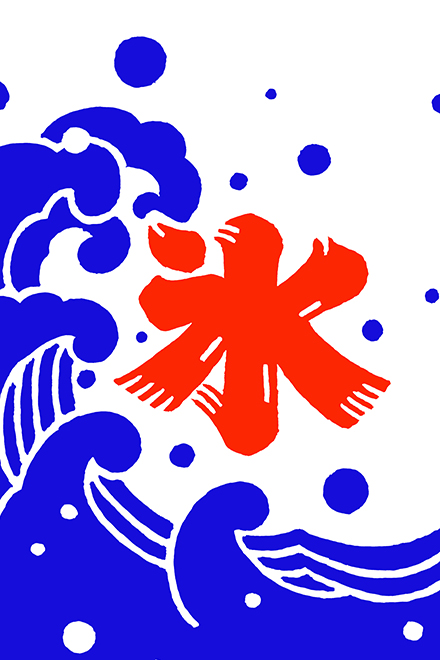
ギラギラ照りつける太陽。
風もなく暑い空気の中を汗だくになって
歩いているとかき氷の旗。
単純明快なデザインが
日本の夏をスカッとさせる。
(脇阪 克二)
"Kakigōri / Shaved ice"(2011,by Katsuji Wakisaka)
Flaming sun baked the earth, there is no trace of wind.
I was soaked with sweat in the scorching sun.
Taking a few steps,
A banner sign '氷(ice)' leap to my eyes.
The design is simple and clean,
bring me a refreshed summer.
| English translation by LI XIAO XIAO |
"Kakigōri / Glace pilée"(2011, par Katsuji Wakisaka)
Le soleil qui brille de milles feux.
Nous marchons en nage dans une chaleur sans vent
quand tout à coup apparaît un petit drapeau
Qui représente une glace pilée.
Ce design simple et direct
Rafraîchit même les jours chauds d'été.
| Traduction française par Jean-Baptiste Fauvel Matsumoto |
"刨冰"(2011, 胁阪 克二)
夏日炎炎,
暑氣熏蒸得人汗津津的。
走幾步就能看見路邊懸挂的“冰”字彩旗。
單純明快的設計,
爲日本夏天增添別具一格的涼爽惬意。
| 中译 : 李 瀟瀟 |
→こちらのテキスタイルデザイン商品
(Textile products with this pattern)
平成28年07月30日 土曜日号
“きゅうり 平成27年”
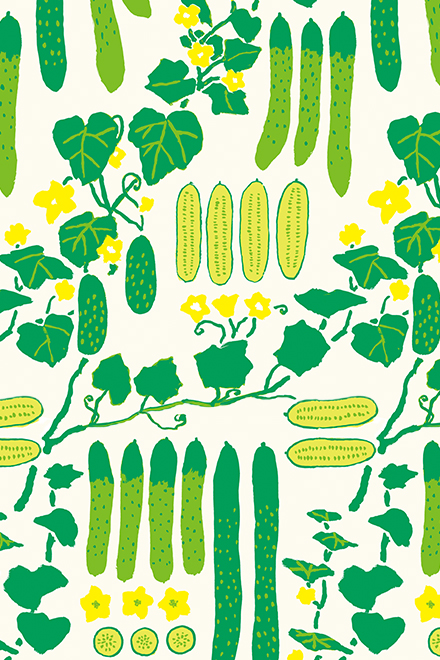
きゅうりは平安の昔から
栽培されているようで
日本人に最も親しまれている野菜のひとつ。
生はもちろん
きゅうりもみや漬物にしてもおいしい。
カリッとした歯応えが
夏の暑い日に涼しさを呼ぶ。
(脇阪 克二)
"Kyuri / cucumbers"(2015,by Katsuji Wakisaka)
Kyuri (cucumbers) seem to have been cultivated since Heian period(794-1185),
and it is one of the most familiar vegetables to Japanese people.
It is nice eaten fresh, of course, as well as brined or pickled.
The crisp texture brings refreshing coolness on a hot summer day.
| English translation by Yuka Mamekoshi |
"Le concombre"(2015, par Katsuji Wakisaka)
Il semblerait que le concombre soit produit depuis l'ère Heian et fasse partie des légumes préférés des Japonais.
Ils sont aussi excellents macérés dans le vinaigre doux.
Ce son si particulier lorsque l’on y croque dedans appelle une vague de fraîcheur en ces chauds jours d'été.
| Traduction française par Jean-Baptiste Fauvel Matsumoto |
"黃瓜"(2015, 胁阪 克二)
黃瓜自平安時代傳入日本後廣泛栽培,
是深受日本民衆喜愛的夏季蔬果之一。
生吃,涼拌,腌制,各具風味。
黃瓜爽脆的口感,
喚來一絲夏日的清涼。
| 中译 : 李 瀟瀟 |
→こちらのテキスタイルデザイン商品
(Textile products with this pattern)
平成28年07月27日 水曜日号
“夏の朝 平成23年”
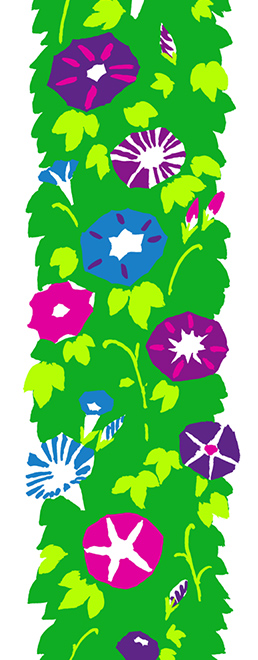
夏の朝、パッと花を咲かせ
一日でしぼんでいく朝顔。
ぐんぐん伸びる蔓や
大きく開いた花は勢いがあって爽快。
まさに夏の花という感じがする。
(脇阪 克二)
"A summer's morn"(2011,by Katsuji Wakisaka)
Morning glories bloom,
as not knowing they will wither this eve.
The climbing vines and blooming flowers,
Give us a smile of vitality for the day.
As Tagore says:
Let life be beautiful like summer flowers.
| English translation by LI XIAO XIAO |
"Un matin d'été"(2011, par Katsuji Wakisaka)
Un matin d'été, une fleur éclos
Nous donnant le sourire pour la journée.
La vigne grimpante et les fleurs épanouies
Apportent de la vivacité et de la fraîcheur.
Une touche florale et estivale supplémentaire!
| Traduction française par Jean-Baptiste Fauvel Matsumoto |
"夏日清晨"(2011, 胁阪 克二)
夏日清晨,
牽牛花倏然盛放。
朝顔花開只一日。
但卻繁茂,
滿開之勢噴湧而出,暢快淋漓。
生如夏花,不過如此。
| 中译 : 李 瀟瀟 |
→こちらのテキスタイルデザイン商品
(Textile products with this pattern)
平成28年07月26日 火曜日号
“扇子 平成28年”

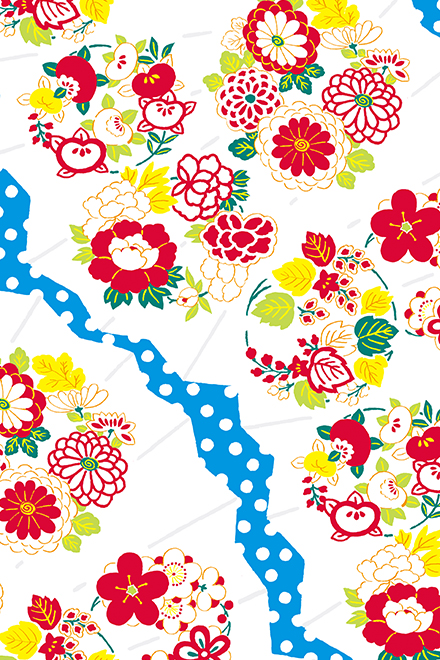
うちわは文明発祥時からあったが
扇子のように折りたためるものは
日本で発明されたもののようだ。
平安時代にはあおぐという役割だけではなく
儀礼の際やコミュニケーションの
道具として用いられ
和歌を扇子に書いて贈ったり
花をのせて手渡したりしていた。
現在においても涼をとる以外に
舞扇としてや落語、お茶、
冠婚葬祭にも用いられている。
又、飾り扇として華やかな絵と
ともに暮しに潤いを与えている。
(脇阪 克二)
"Sensu / Folding fan"(2016,by Katsuji Wakisaka)
Sensu, or folding fan, unlike uchiwa(round fan) which originally came from China,
were first invented in Japan.
During the Heian period, it was not only served to a cooling device, but also as a tool for social contact or traditional ceremonies.People writing waka poems on sensu or put flowers on them and giving them to someone in mind.
Currently, apart from its cooling off function, sensu can also be seen during rakugo performances(traditional comic storytelling), tea ceremonies, funerals, weddings, and other ceremonial occasions.
There are also sensu with traditional gorgeous patterns that make them as interior accesseories.
Sensu gives poetic charm to hot summer in Japan.
| English translation by LI XIAO XIAO |
"Sensu / Éventail"(2016, par Katsuji Wakisaka)
L'écran à main existe depuis l'apparition de l'écriture mais il semblerait que le premier éventail plié ait été découvert au Japon.
Pendant l'ère Heian, il ne servait pas simplement à éventer mais également comme outil de communication ou à l'occasion de réunions protocolaires et religieuses. Il était aussi offert avec un poème Waka écrit dessus ou accompagné d'une fleur.
Présentement, à part sa fonction de ventilation, il est utilisé comme éventail de danseur lors de représentations de rakugo, de cérémonies de thé ou d'événements importants de la vie quotidienne. Pour finir, il donne une touche décorative à la maison grâce à ses magnifiques représentations.
| Traduction française par Jean-Baptiste Fauvel Matsumoto |
"折扇"(2016, 胁阪 克二)
團扇古而有之,折扇則發祥于日本。
平安時代,折扇不僅是扇風取涼的道具,
也是社交禮儀中廣爲使用的物品。
人們在扇面上揮毫和歌,或是把鮮花放在折扇上相互贈送。
如今折扇常用于在茶道或冠婚葬祭的儀式中,
也作爲舞扇或是落語(日本單口相聲形式的曲藝演出)的舞台小道具。
折扇的藝術價值高,成爲現代工藝品被展覽收藏。
華麗的扇面紋樣是日本人生活中的一抹亮彩。
| 中译 : 李 瀟瀟 |
→こちらのテキスタイルデザイン商品
(Textile products with this pattern)
平成28年07月23日 土曜日号
“わた雲 平成4年”
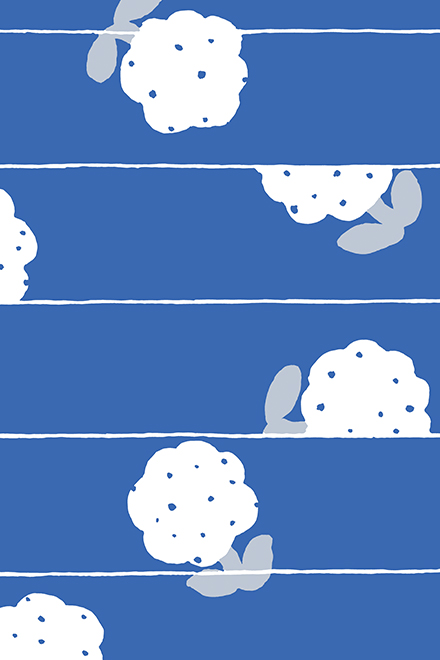
梅雨があけて久しぶりの青空が顔を出した。
空にはふんわりとしたわた菓子のような雲が浮かんでいる。
雨が続いて滅入っていた気持ちも晴れて、
心がのんびりしてくる。ぼんやり見ていた雲が、
だんだんいろんなものに見えてきて、
花がポッカリと浮かんでいるように見えてくる。
(脇阪 克二)
"watagumo / Cotton candy clouds"(1992,by Katsuji Wakisaka)
The rainy season closes and the blue sky shows.
Clouds stand out against the blue,
Soft as cotton candies and white as the snow.
Cotton candy clouds,
They dispel my gloom and filled me with rapture.
Then they start turning into different forms,
Fragrance of cotton candies hanging in the air.
| English translation by LI XIAO XIAO |
"watagumo / Petits nuages"(1992, par Katsuji Wakisaka)
La pluie cesse et le ciel bleu montre son visage.
Dans le ciel flotte des nuages en forme d'îles flottantes.
La pluie continue de tomber et la déprime s'envole à son tour, allégeant nos cœurs.
Les nuages que nous regardions d'un air distrait
Commencent à prendre différentes formes
Et ressemblent de plus en plus à des parterres de fleurs.
| Traduction française par Jean-Baptiste Fauvel Matsumoto |
"綿雲"(1992, 胁阪 克二)
梅雨結束,爽晴。
久未放晴的天空,湛藍。
挂幾朵棉花糖般松軟的,浮雲。
此景將梅雨季胸中的陰郁一掃而光。
我出神地望著青空,
看那些卷雲悠閑地變成各種形狀,
雲輕如棉,緩慢而柔和地開出一朵朵花來。
| 中译 : 李 瀟瀟 |
→こちらのテキスタイルデザイン商品
(Textile products with this pattern)
平成28年07月20日 水曜日号
“大暑 平成26年”
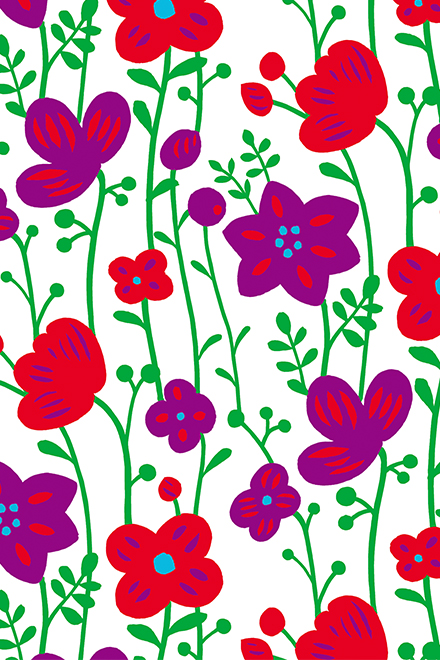
七月の下旬ごろの一年中で最も暑い季節。
かっと照りつける太陽のもと茎はぐんぐん伸び
花は咲き乱れる。
生命が豊かに充実するとき。
(脇阪 克二)
"Taisho / Blistering heat"(2014,by Katsuji Wakisaka)
Late July expected to be the hottest period of the year.
The earth is aglow with branches and flowers,
While the scorching sun burning in the sky.
This is a season full of vigor and vitality.
| English translation by LI XIAO XIAO |
"Chaleur caniculaire"(2014, par Katsuji Wakisaka)
Fin juillet, nous sommes rentrés dans la saison la plus chaude de l'année.
Le soleil éclatant fait pousser les sarments et éclore les fleurs.
Une période où la vie prospère pleinement.
| Traduction française par Jean-Baptiste Fauvel Matsumoto |
"大暑"(2014, 胁阪 克二)
七月下旬是一年中最溽熱的季節。
赤日炎炎下草木蕃庑,花開繁亂,
生命充實有力,夏之盛。
| 中译 : 李 瀟瀟 |
→こちらのテキスタイルデザイン商品
(Textile products with this pattern)
平成28年07月16日 土曜日号
“笑顔 平成2年”
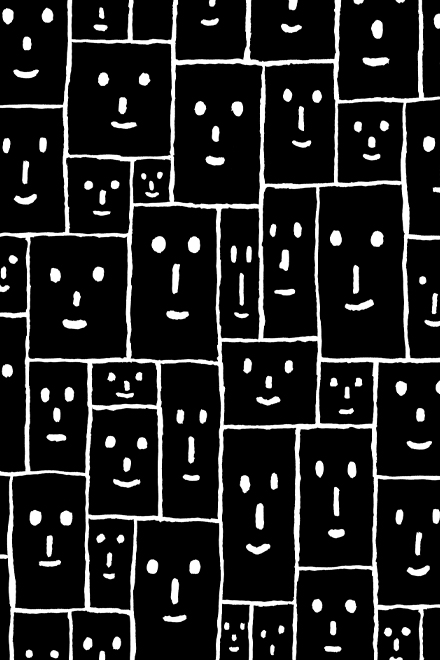
いっぱい笑顔を描いたが
微妙に少しずつ違っている。
その少しの違いでいろんな表情になっている。
あなたもこの笑顔が好きだというのが
あるかもしれませんね。
(脇阪 克二)
"Everyone's smiles"(1990,by Katsuji Wakisaka)
I drew a smile.
Another, and another smile.
Slightly different from each other,
They expressing different moods.
You may be touched by one of them, saying
I like this one!
Well with another smile on your face.
| English translation by LI XIAO XIAO |
"Un visage souriant"(1990, par Katsuji Wakisaka)
J'ai dessiné beaucoup de sourires mais Ils sont légèrement différents les uns des autres. Grâce à ces différences, de nombreuses expressions sont dépeintes. Parmi eux se trouve peut être un sourire que vous apprécierez également.
| Traduction française par Jean-Baptiste Fauvel Matsumoto |
"笑臉"(1990, 胁阪 克二)
我畫了很多笑臉。
他們都嘴角上揚卻帶著不同表情。
或許你可以從這些細微差別中,
發現一張喜歡的獨特的笑臉。
| 中译 : 李 瀟瀟 |
→こちらのテキスタイルデザイン商品
(Textile products with this pattern)
平成28年07月13日 水曜日号
“朝顔 平成19年”

朝、花を開き
夕方にはしぼんでいく朝顔。
ピンク、紫、青などが
鮮やかな白と出会いいのちの花を咲かせる。
暑い夏の朝に爽やかな一日を
プレゼントしてくれる。
(脇阪 克二)
"Morning glories"(2007,by Katsuji Wakisaka)
Morning glories,
Wake up in the morning, fade away at dusk.
Pink, purple, blue……
Each of them meet up their own white stars, make an excellent bloom,
Morning glories, refreshing and clear,
Giving us a bright summer day.
| English translation by LI XIAO XIAO |
"Volubilis, belle de jour"(2007, par Katsuji Wakisaka)
La belle de jour
Ouvre ses pétales au matin
Et les referme le soir venu.
Rose, violette ou bleue
Elle s'ouvre au monde en rencontrant la blancheur fraîche du matin.
Belle du jour, un chaud matin d'été,
Nous offre une belle journée éclatante.
| Traduction française par Jean-Baptiste Fauvel Matsumoto |
"朝顔"(2007, 胁阪 克二)
朝顔(牽牛花)如其名,開在晨間,夜裏萎去。
粉的,紫的,藍的……
缤紛的朝顔綻出白色星蕊,
在暑夏的清晨盛放,
將一日清爽包成禮物送給我們。
| 中译 : 李 瀟瀟 |
→こちらのテキスタイルデザイン商品
(Textile products with this pattern)
平成28年07月06日 水曜日号
“千弥無智喜珍(チャンチキチン) 平成21年”
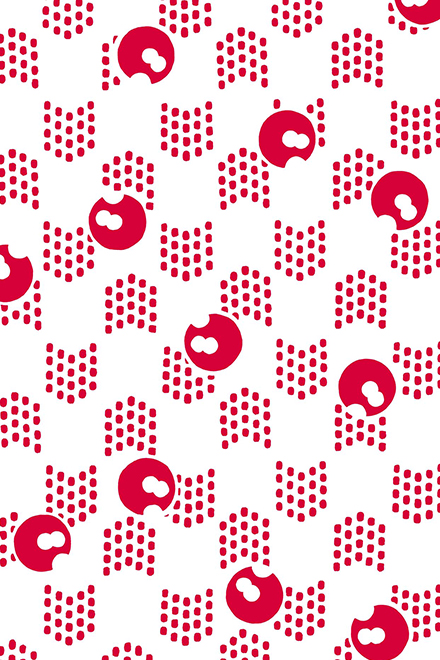
七月の京都は祇園祭。
一日から三十一日までいろんな行事がとり行われる。
十七日が山鉾巡行で祭は最高潮。
夜の祇園祭を彩る提灯とうちわ(稚児の補佐役の禿(かむろ)が持つ)をモチーフに赤一色で表現。
(脇阪 克二)
"Chanchikichin / Lanterns and fans"(2009,by Katsuji Wakisaka)
July is the month of the Gion Matsuri in Kyoto.
It takes place over the entire month of July.
There are many different events, but the grand procession of floats (Yamaboko Junkō) on July17 is particularly spectacular.
This pattern is designed in the motif of lanterns and uchiwa (paper fans) of the festival.
| English translation by LI XIAO XIAO |
"Chanchikichin / Ding Ding Ding"(2009, par Katsuji Wakisaka)
Le mois de Juillet à Kyoto, c'est le festival de Gion.
Du 1er au 31, de nombreux événements sont organisés.
Le 17 a lieu la Parade des 33 chars, point culminant du festival.
Nous avons représenté d'un motif rouge les lanternes et les éventails
(utilisés par les enfants qui assistent les processions) qui colorent les nuits du festival.
| Traduction française par Jean-Baptiste Fauvel Matsumoto |
"提燈團扇,八音叠奏"(2009, 胁阪 克二)
七月的京都屬于盛大的祇園祭。
整個七月,全城回響著急管繁弦的傳統器樂聲。
17日舉行的絢麗多彩的神轎巡行是祇園祭的高潮。
此紋樣用單色的赤紅描繪祇園祭中的提燈和團扇,表現懸燈結彩的熱鬧場景。
| 中译 : 李 瀟瀟 |
→こちらのテキスタイルデザイン商品
(Textile products with this pattern)
平成28年07月02日 土曜日号
“組手 平成27年”
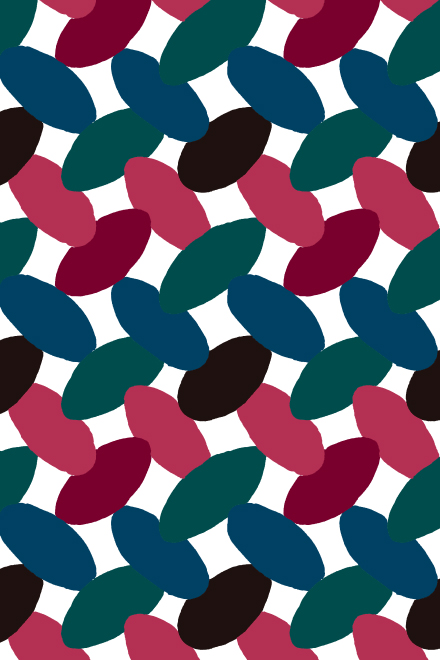
木と木を組む。
手と手を組む。
人と人が組む。
しっかり組み合った形は
丈夫で美しい。
(脇阪 克二)
"Kumite / Holding together"(2015,by Katsuji Wakisaka)
Trees holding together,
Hands holding together,
People team up with each other.
This firmly connected pattern,
Tight, strong and beautiful.
| English translation by LI XIAO XIAO |
"Kumite / Style de Karaté"(2015, par Katsuji Wakisaka)
Laçant les arbres entre eux.
Joignant les mains entre elles.
Connectant les hommes entre eux.
Il n'y a rien de plus fort et beau
Que ce lien aussi solide.
| Traduction française par Jean-Baptiste Fauvel Matsumoto |
"交织"(2015, 胁阪 克二)
树与树相交,
手与手相交,
人与人相交。
我用此纹样表现一种紧固交织,
坚实而美。
| 中译 : 李 瀟瀟 |
→こちらのテキスタイルデザイン商品
(Textile products with this pattern)


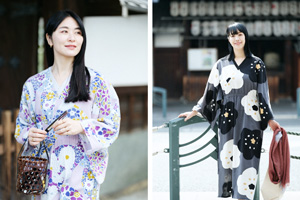
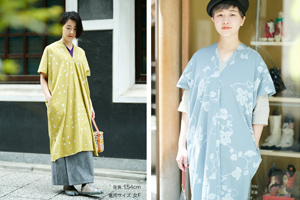
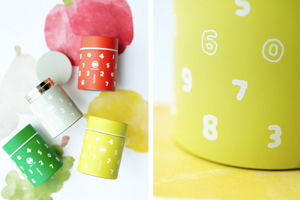


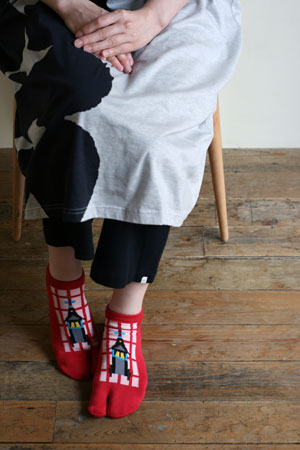
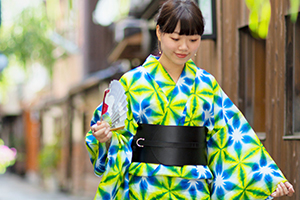

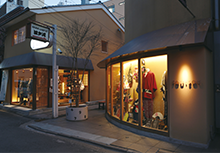
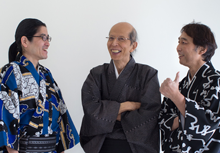

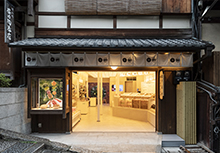

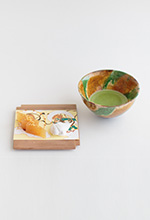
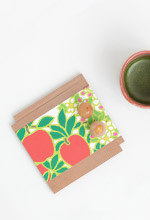










 お問い合わせ窓口
お問い合わせ窓口










